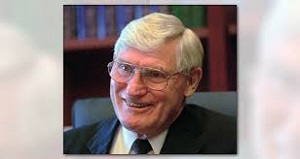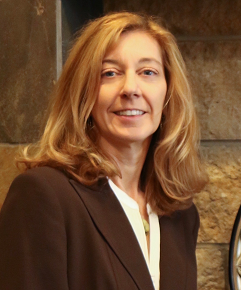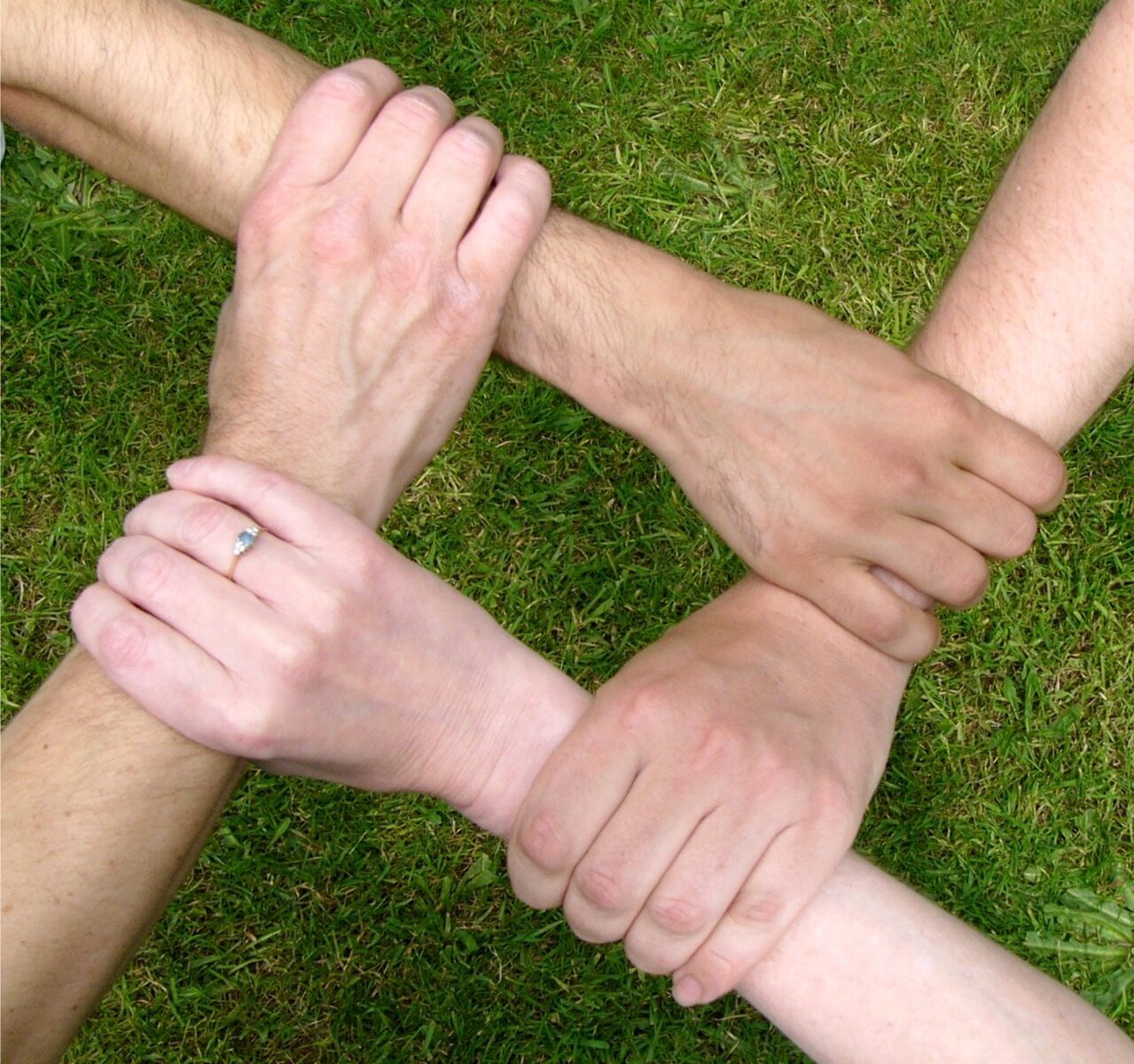Thirty years ago, in 1990, a family lawyer in Minneapolis named Stu Webb had an idea. He thought the idea was good enough to share with the Minnesota Supreme Court Justice at the time, “Sandy” Keith. Stu’s letter of February 14, 1990, to Chief Justice Keith starts out:
Dear Sandy,
I met you at a party . . . several years ago.
Stu did not even know Sandy Keith! But undaunted, Stu plows ahead:
I think I’ve come up with a new wrinkle that I’d like to share with you. One of the aspects of mediation that I feel is a weakness is that it basically leaves out input by the lawyer at the early stages [of the mediation process]. . .. By that I don’t mean adversarial, contentious lawyering, but the analytical, reasoned ability to solve problems and generate creative alternatives and create a positive context for settlement.
…[Y]ou and I have both experienced, I’m sure, those occasional times, occurring usually by accident, when in the course of attempting to negotiate a family law settlement, we find ourselves in a conference with the opposing counsel, and perhaps the respective clients, where the dynamics were such that in a climate of positive energy, creative alternatives were presented. In that context, everyone contributed to a final settlement that satisfied all concerned—and everyone left the conference feeling high energy, good feelings and satisfaction. More than likely, the possibility for a change in the way the parties related to each other in the future may have greatly increased. As a result, the lawyers may also develop a degree of trust between them that might make future dealings more productive.
So, my premise has been: Why not create this settlement climate deliberately? . . . I would do this by creating a coterie of lawyers who would agree to take cases . . . for settlement only. . . . I call the attorney in this settlement model a collaborative attorney, practicing in that case collaborative law.
This little history might end here but Chief Justice Sandy Keith did respond to Stu’s letter(!!):
Dear Stu,
Many thanks for one of the most thoughtful letters I have received these past months. Congratulations . . . on the model you are setting up in the family law area. . . . I know it will be successful. . . . I think you have thought it through better than most attorneys and I think it is a very valid model in the family law area.
Both Stu Webb and Sandy Keith were pioneers in family law practice. Sandy was a pioneer in using a mediation process in family law; Stu was a pioneer in creating a collaborative process in family law. Thanks to them, out-of-court processes—mediation and collaboration—are benefiting clients all over the world. Sandy Keith—former Minnesota Supreme Court Justice, former Lieutenant Governor, former State Senator, and former family law attorney—died October 3, 2020. His support of the Collaborative process is not forgotten.
Footnote from Stu Webb, 10/6/20:
Here is the link to the Star Tribune Obituary of Sandy Keith, who died last Saturday, October 3 at 91! I could say that Sandy is responsible for releasing Collaborative Law to the world! In 1990, when I self-questioned the credibility of the concept, I wrote him a letter describing the process and, essentially, highlighting some potential advantages of it over mediation (which was his former practice specialty!) Instead of defensively ‘shooting it down’, he Immediately sent a short note back, basically saying ‘wonderful, go for it’! And years later, I had the honor of participating in a Collaborative Law case with him in my home office! WHAT A GUY!!
Star Tribune Obituary \Sandy Keith: https://www.startribune.com/sandy-keith-former-minnesota-supreme-court-chief-justice-dies/572638202/
About The Author Tonda Mattie, has been a Family Law attorney for over 40 years and has practiced exclusively Collaborative Family Law since 2006. She has been involved in the Collaborative Law movement since 1992. She has been past President and past Co-President of the Collaborative Law Institute (CLI) of Minnesota. She has headed the CLI Training Committee as chair or co-chair since 2004. She is engaged in the practice of her dreams using a collaborative process that 1) allows good people to be their best despite the crisis they are in; 2) is centered on the well-being of the children; 3) creates a safe environment for difficult conversations; 4) focuses on the future rather than on blame and past grievances; 5) identifies and meets the needs and interests of all family members; 6) empowers parties to control and create their own mutual settlement; and 7) creates a climate in which healing can begin to occur. Visit her website at www.mndivorce.com
Tonda Mattie, has been a Family Law attorney for over 40 years and has practiced exclusively Collaborative Family Law since 2006. She has been involved in the Collaborative Law movement since 1992. She has been past President and past Co-President of the Collaborative Law Institute (CLI) of Minnesota. She has headed the CLI Training Committee as chair or co-chair since 2004. She is engaged in the practice of her dreams using a collaborative process that 1) allows good people to be their best despite the crisis they are in; 2) is centered on the well-being of the children; 3) creates a safe environment for difficult conversations; 4) focuses on the future rather than on blame and past grievances; 5) identifies and meets the needs and interests of all family members; 6) empowers parties to control and create their own mutual settlement; and 7) creates a climate in which healing can begin to occur. Visit her website at www.mndivorce.com






 There has been some buzz about the new film on Netflix called Marriage Story about a couple, Charlie and Nicole, with a son, Henry, going through divorce. I decided to watch it since this is my area of practice and a prospective client referenced it last week in a consultation. It started with the couple stating all these things they loved about the other person with pleasant images of life together. I was ready for an uplifting movie, until about 8 minutes in, when I learn that the couple is in a divorce meditation session and Nicole refuses to read her list out loud of what she loves about Charlie.The mediator says he likes to start mediation with a “note of positivity” to set the stage for working together. Noble idea, but is that the best way to start? I don’t know any mediators that start that way. I wondered if people now think that is how all mediations start. While I too try to start from a more positive place, I start by asking clients to identify the goals they each have for the process and outcomes so we can see if they have any common visions for the future in separate homes. I am amazed how often people have common goals around their kids and other outcomes and many times support goals that are specific to one person. But I don’t think I would start by asking them to share a written list of qualities they love about their soon to be former spouse. That is more appropriate for marriage counseling. What a different dynamic that sets in mediation. When one person wants the divorce and the other one doesn’t, it starts the process from a place of internal conflict. It was visible in the movie. I just don’t think mediators do that and it paints an inaccurate picture of the process.
But, I appreciated how Charlie and Nicole were trying to work together in mediation. Unfortunately, the film spent very little time on the topic of mediation. Instead, at the 20 minute mark, the story moved in the direction of the Nicole, played by Scarlett Johansson, hiring the LA attorney Nora Fanshaw, played by Laura Dern, a sexy, savvy attorney that you want to trust, but your gut tells you, “Not too fast.” When Charlie, played by Adam Driver, goes to find his own attorney, feeling distraught that Nicole suddenly switched directions and hired an attorney, the first attorney he talks to recognizes that Nora is on the other side, clearly knowing how she operates, and says his rate is $900/hr, he needs a retainer of $25,000 and they will need to do forensic accounting for $10,000-$20,000. Everything indicates an expensive, high stakes fight. He then starts asking all these questions to elicit information so he can immediately start strategizing about all these angles to take and “Win!” Charlie realizes what he is walking into, leaves and eventually lands on hiring Bert Spitz at $400/hr, played by Alan Alda, after there is no one else to hire because Nicole has met with all the other “good attorneys” in order to get them disqualified from being able to meet with Charlie. But in the end, reasonable sounding Bert isn’t tough enough against Nora so, Charlie decides to go with the $900/hr attorney afterall.
Well, the whole thing devolves into a knock down drag out court battle over money, custody (including a custody evaluation), and the attorneys revealing every dark secret about the other parent and “slinging mud,” in order to convince the judge to rule in their favor. Your heart breaks for Charlie and Nicole, but especially for Henry, caught in the middle. And then I heard my own voice say, “That is exactly why I am a Collaborative attorney, instead!” It is clear that neither Nicole nor Charlie ever thought they would go down that vicious road but what is clear, is that the divorce took on a life of its own. Nicole left everything to Nora to handle and decided not to question how she operated.
What was also clear to me was who they each chose to represent them had everything to do with how things went. Charlie and Nicole were not asked what was important to each of them or what they wanted for Henry. From the moment they met the attorneys, the attorneys were building their case, setting up the chessboard and thinking about what moves to make to win the game despite the casualties.
Why does that matter? When an attorney can only think in the win-lose mind frame, that they have all the answers and that everything has to follow what they think is the right path, you are giving up all power over your family and your life. Most people I meet with want to be in charge of these major decisions that will impact their life and family. It is important to stop and think about what is important for you, your kids, and your family. You are still part of a family system, even when you are getting a divorce. You are just changing the family configuration, setting new boundaries and expectations, and figuring out how to divide the assets and manage cash flow living separately. Working with attorneys who understand this, who are focused on problem-solving and reaching a win-win outcome out of court, makes all the difference for clients and their family. And if you have two attorneys who trust each other professionally, that is an asset to you and your spouse. The Collaborative Divorce process offers just that: a respectful, transparent, child-focused, problem-solving out-of-court approach for divorce. Ask yourself what story you want your children to say about their parents’ divorce when they are 25? Choose wisely.
There has been some buzz about the new film on Netflix called Marriage Story about a couple, Charlie and Nicole, with a son, Henry, going through divorce. I decided to watch it since this is my area of practice and a prospective client referenced it last week in a consultation. It started with the couple stating all these things they loved about the other person with pleasant images of life together. I was ready for an uplifting movie, until about 8 minutes in, when I learn that the couple is in a divorce meditation session and Nicole refuses to read her list out loud of what she loves about Charlie.The mediator says he likes to start mediation with a “note of positivity” to set the stage for working together. Noble idea, but is that the best way to start? I don’t know any mediators that start that way. I wondered if people now think that is how all mediations start. While I too try to start from a more positive place, I start by asking clients to identify the goals they each have for the process and outcomes so we can see if they have any common visions for the future in separate homes. I am amazed how often people have common goals around their kids and other outcomes and many times support goals that are specific to one person. But I don’t think I would start by asking them to share a written list of qualities they love about their soon to be former spouse. That is more appropriate for marriage counseling. What a different dynamic that sets in mediation. When one person wants the divorce and the other one doesn’t, it starts the process from a place of internal conflict. It was visible in the movie. I just don’t think mediators do that and it paints an inaccurate picture of the process.
But, I appreciated how Charlie and Nicole were trying to work together in mediation. Unfortunately, the film spent very little time on the topic of mediation. Instead, at the 20 minute mark, the story moved in the direction of the Nicole, played by Scarlett Johansson, hiring the LA attorney Nora Fanshaw, played by Laura Dern, a sexy, savvy attorney that you want to trust, but your gut tells you, “Not too fast.” When Charlie, played by Adam Driver, goes to find his own attorney, feeling distraught that Nicole suddenly switched directions and hired an attorney, the first attorney he talks to recognizes that Nora is on the other side, clearly knowing how she operates, and says his rate is $900/hr, he needs a retainer of $25,000 and they will need to do forensic accounting for $10,000-$20,000. Everything indicates an expensive, high stakes fight. He then starts asking all these questions to elicit information so he can immediately start strategizing about all these angles to take and “Win!” Charlie realizes what he is walking into, leaves and eventually lands on hiring Bert Spitz at $400/hr, played by Alan Alda, after there is no one else to hire because Nicole has met with all the other “good attorneys” in order to get them disqualified from being able to meet with Charlie. But in the end, reasonable sounding Bert isn’t tough enough against Nora so, Charlie decides to go with the $900/hr attorney afterall.
Well, the whole thing devolves into a knock down drag out court battle over money, custody (including a custody evaluation), and the attorneys revealing every dark secret about the other parent and “slinging mud,” in order to convince the judge to rule in their favor. Your heart breaks for Charlie and Nicole, but especially for Henry, caught in the middle. And then I heard my own voice say, “That is exactly why I am a Collaborative attorney, instead!” It is clear that neither Nicole nor Charlie ever thought they would go down that vicious road but what is clear, is that the divorce took on a life of its own. Nicole left everything to Nora to handle and decided not to question how she operated.
What was also clear to me was who they each chose to represent them had everything to do with how things went. Charlie and Nicole were not asked what was important to each of them or what they wanted for Henry. From the moment they met the attorneys, the attorneys were building their case, setting up the chessboard and thinking about what moves to make to win the game despite the casualties.
Why does that matter? When an attorney can only think in the win-lose mind frame, that they have all the answers and that everything has to follow what they think is the right path, you are giving up all power over your family and your life. Most people I meet with want to be in charge of these major decisions that will impact their life and family. It is important to stop and think about what is important for you, your kids, and your family. You are still part of a family system, even when you are getting a divorce. You are just changing the family configuration, setting new boundaries and expectations, and figuring out how to divide the assets and manage cash flow living separately. Working with attorneys who understand this, who are focused on problem-solving and reaching a win-win outcome out of court, makes all the difference for clients and their family. And if you have two attorneys who trust each other professionally, that is an asset to you and your spouse. The Collaborative Divorce process offers just that: a respectful, transparent, child-focused, problem-solving out-of-court approach for divorce. Ask yourself what story you want your children to say about their parents’ divorce when they are 25? Choose wisely.







